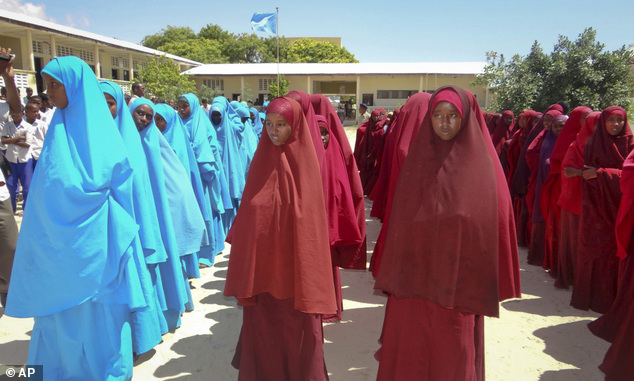EDITORIAL: Low number of female students in 2015 exams calls for more robust engagement

The second government administered form four exam results were released Thursday with a total of 11,574 students having sat for the exams.
An impressive 87.3% of the students crossed the pass mark while 12.7% did not meet the minimum threshold to allow them qualify for university education. More promising is that a girl, Safiyo Osman Mahamed emerged the best overall.
However what stands out in these exams is the ratio of male to female students. Out of 11,574 candidates, almost three quarters, (7905) were male while female students accounted for 31.7% or 3669.
Out of the 3669 female candidates who sat for exams, a majority, 3180 accounting for 27.48% of the total passed the exams while 489 students, or 4.2% failed.
A total of 6924 male students passed the exam accounting for 59.8% of the total number while 8.5% or 981 candidates did not meet the required mark. The 2015 exams was an improvement from 2014 which attracted 7000 students.
A matter of concern
The low number of female students registering for the exams must raise concern in government and education stakeholders across the board. Though the indicators may not be sufficient to draw a deduction given this is the second year, understanding the underlying issues is an imperative.
It is instructive that umbrella organisations which administer private exams publicly release the exams results for the purposes of comparison. This is because it is not easy to conclude that the number of female students sitting for national exams is generally way below their male counterparts based on the government administered exams only.
Could there be a scenario or possibility that fewer female candidates register for government exams but post impressive turn out in the umbrellas administered exams?
Girl child education
Be it as it may, the need to ensure a more robust campaign for girl child education cannot be overemphasized.
A report to be released Monday by the UN children’s agency, UNICEF indicates nearly all girls-98% in Somalia undergo female genital mutilation, the highest in the world. The report also indicates a woman dies in Somalia every 3 hours as a result of pregnancy complications.
These are not just statistics but they speak volumes about constituting factors; notably lack of education. FGM drives many girls out of school owing to the resultant effects. Such girls later become victims of the same FGM during birth meaning they either lose their lives or acquire health related complications.
It is instructive therefore that the release of the exams results should not just end there. The government and all stakeholders involved must zero in on the figures and find ways to ensure the number of girls sitting for final exams goes up every year.
Standardization of exam system
Finally, a single exam body is the best option for the education sector in Somalia. It goes without mention that the private school umbrellas have remarkably done a great job in standing in the gap when the public sector collapsed in Somalia. Now that the ministry of educational is functional enough to conduct national exams, the umbrellas should hand over the responsibility not just of administering the exams but also of managing the school curriculum to the government.
This move will among others make it easy to study and come up with more conclusive and accurate outlook of the education system in Somalia.